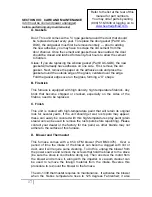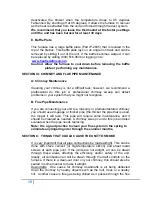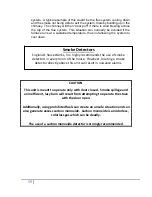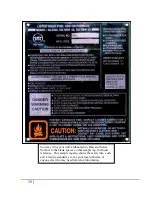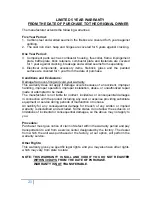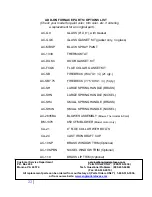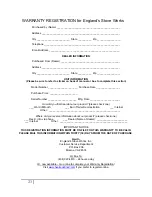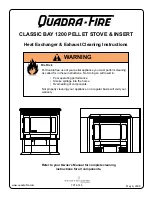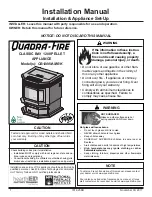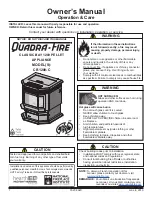
13
Safe Wood-burning Practices
Once your wood-burning appliance is properly installed, follow these guidelines
for safe operation:
Keep all flammable household items—drapes, furniture, newspapers, and
books—far away from the appliance.
Start fires only with newspaper, dry kindling and all natural or organic fire
starters. Never start a fire with gasoline, kerosene, or charcoal starter.
Do not burn wet or green (unseasoned) logs.
Do not use logs made from wax and sawdust in your wood stove – they
are made for open hearth fireplaces. If you use manufactured logs,
choose those made from 100 percent compressed sawdust.
Build hot fires. For most appliances, a smoldering fire is not a safe or
efficient fire.
Keep the doors of your wood-burning appliance closed unless loading or
stoking the live fire. Harmful chemicals, like carbon monoxide, can be
released into your home.
Regularly remove ashes from your wood-burning appliance into a metal
container with a cover. Store the container of ashes outdoors on a
cement or brick slab (not on a wood deck or near wood).
Keep a fire extinguisher handy.
Remember to check your local
air quality forecast
before you burn.
B. Draft Controls and Draft
This unit has a draft control system that is used to determine the
amount of combustion air that enters the stove. The more the controls
are opened, the more air will enter the firebox and thereby increase the
heat output of the unit. This will, by creating a hotter fire, make your
fuel burn faster. Pushing the slide draft located above the door to the
left opens the damper, and unscrewing the bottom screw damper
(counterclockwise) located on the bottom ash door opens that control.
No two flue systems are identical; you will have to experiment with
your furnace draft settings to achieve the maximum burn time and heat
output. If you have any problem regulating the furnace, consult your
local dealer or our Customer Service department at (800) 245-6489.
Draft: Draft is the force which moves air from the appliance up through
the chimney. The amount of draft in your chimney depends on the
length of the chimney, local geography, nearby obstructions and other
factors. Too much draft may cause excessive temperatures in the
appliance and may damage the catalytic combustor
.
Inadequate draft

















